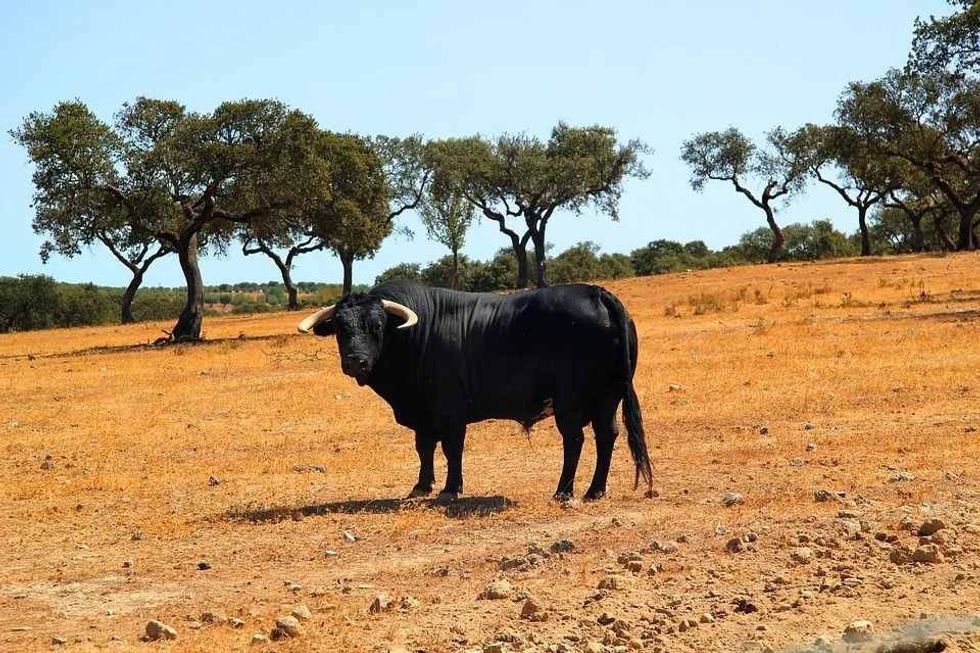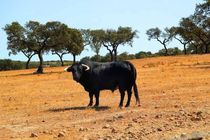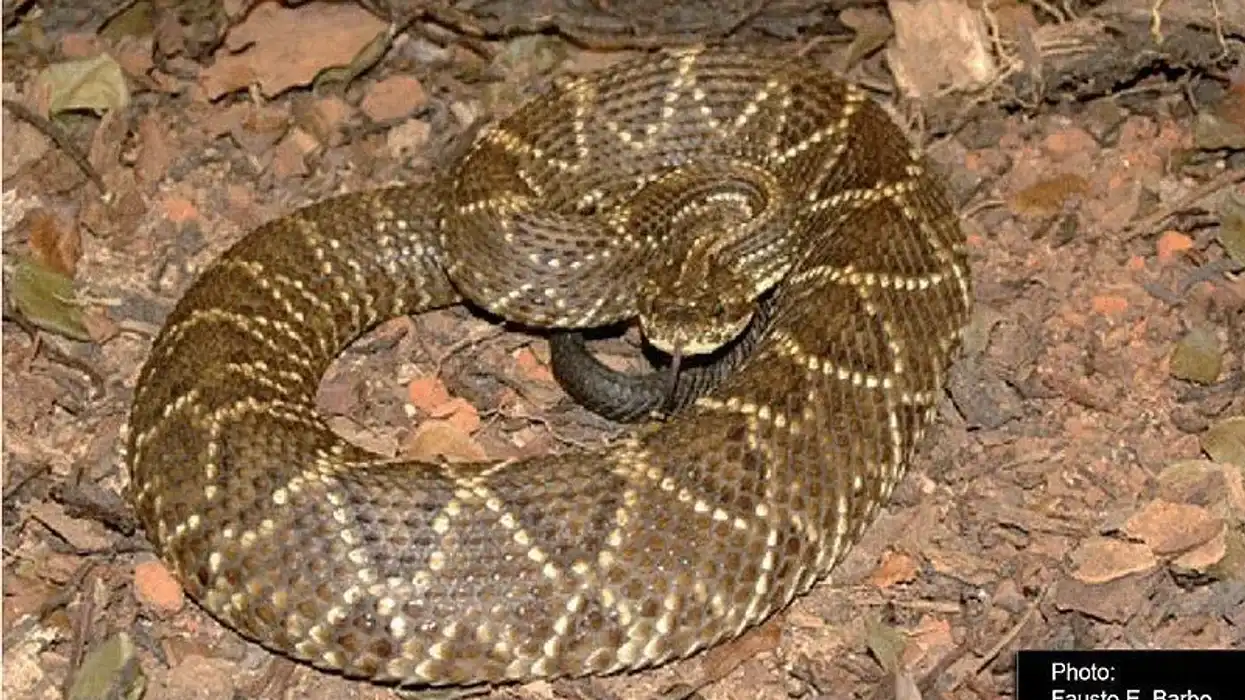Be it Mexican bull riding or Spanish bullfighting, these splendid mammals have always been fascinating. Bulls are male species of cattle (Bos taurus) which find their place across the world. They are widespread across all the continents, excluding Antarctica. Numerous breeds are found in different parts of the world depending on environmental factors.
Bulls are ferocious animals and need to be cautiously dealt with. Bull handlers generally use nose rings to maintain control over the fierce animal, so the risk of attack is minimal.
Are bulls domesticated only for their meat, hides, and breeding purposes? These hefty mammals have a significant role to play in various cultural activities that have a deep-rooted history. Interestingly, bulls have a place in the ancient Sumerian epics and Indian Hindu mythology. Also, native American tribes use a bull skull as a symbol of prosperity.
Read ahead to learn more interesting facts about this beast of a mammal. Also, check out our other articles on highland cattle and blue wildebeest.
Bull Interesting Facts
What type of animal is a bull?
The bull is the male species of cattle. They are domesticated, herbivorous animals that are widespread across the globe.
What class of animal does a bull belong to?
Bulls are members of the class Mammalia and the family Bovidae.
How many bulls are there in the world?
Bulls are the male species of cattle. Statistical observations point that the population of cattle across the world is a little over a billion.
However, as per the Food and Agriculture Organization, there are roughly 1.5 billion cattle globally as of 2018. Therefore, considering an approximate 50% of cattle are bulls, we can estimate the number of bulls to be around 750 million.
Where does a bull live?
Bulls are widely found across the world. They live in all continents barring Antarctica. Like all farm animals, bulls are usually domesticated in farms and ranches for their meat and hides. Bulls also play an important role in cultural events like bull taming and bullfighting.
What is a bull's habitat?
Bulls live in places where there is enough vegetation cover for consumption. Grasslands, open spaces with bushes and shrubs, pastures, farms, and ranches make suitable habitats for bulls.
Who do bulls live with?
Cattle live in herds and they have a close association with human beings. Bulls are sometimes kept along with cows for breeding. During off-seasons, several bulls may be kept with each other in a bachelor herd.
How long does a bull live?
The average lifespan of cattle is about 18 to 22 years. A steer or a castrated bull is often killed before it reaches 1650 lb (748 kg). However, the breeding stock is allowed a longer span of life, up to 25 years.
How do they reproduce?
Bulls can be fertile at about seven months of age. Female cattle experience about 17 to 24 days of the estrous period, during which they are sexually receptive to the male's advances.
Artificial insemination or medically assisted reproduction is also quite common at farms. The cow's gestation period is nine months. Most cows deliver a single calf at a time.
What is their conservation status?
Bulls are commonly found across the world. The conservation status of this animal is Not Evaluated, however, as per The International Union for Conservation of Nature (IUCN), cattle is categorized as Domesticated. There is no immediate threat to the species' survival as they are found abundantly.
Bull Fun Facts
What do bulls look like?
Bulls are the male species of cattle. In a bull vs. cow comparison, a bull is more muscular compared to a cow. Bulls are pretty well-built with a muscular neck, larger feet, and dense bones.
The hair on their body differs from breed to breed, however, the body hair is usually shorter. They are usually similar to cows in height or a little taller. Some bull cattle breeds have a mane of curly, wooly hair.
Bulls have a hump on their shoulders. Some breeds of cows also feature a hump.
Bulls are heavier than cows due to the additional bone and muscular mass. Bulls may be horned or hornless. Bull horns are thicker but shorter compared to those of cows.
How cute are they?
Bulls are majestic farm animals that have cultural and economic significance. These well-built and hefty animals are pretty aggressive and need cautious handling. However, bull calves are cute and adorable.
How do they communicate?
Bulls express themselves using vocal and visual signs. For example, they 'moo' and display different body and tail positions to express threats, challenges, or mating advances.
How big is a bull?
Bulls are pretty sizeable animals that can be around 6 ft (1.8 m) tall. They are quite similar to the western black rhinoceros in height. However, it can be double the size of a mountain goat in terms of its height.
How fast can a bull move?
Bulls are pretty fast runners. The average speed of a bull is about 15-20 mph (24-32 kph). However, at its top speed, it can run up to 35 mph (56 kph).
How much does a bull weigh?
An adult bull can be quite hefty. It can weigh about 1100-2200 lb (499-998 kg), whereas a calf generally weighs about 55-99 lb (25-45 kg).
What are their male and female names of the species?
Bulls are the male species of cattle, and the female species are called cows.
What would you call a baby bull?
A baby bull is called a calf. Calves are allowed to grow to adult cattle, or they are slaughtered for their meat and hide.
What do they eat?
Bulls are herbivores. Cattle rearers feed bulls with cattle feed which is rich in nutritional supplements, including grains, oilseeds, hay, and roughages. Branded cattle feed is also a widely used option.
Are they dangerous?
Bulls are very aggressive animals and need to be handled carefully to ensure protection. Bulls may fiercely trample or gore the handler that poses a high risk and turn fatal.
Would they make a good pet?
Bulls are bred for meat and their hides. However, their behavior is unpredictable as they can become violent. Taming the bull is essential. For a casual cattle keeper, a bull may not be a suitable pet to keep.
Did you know...
Spanish bullfighting boasts of a rich history dating back to the 8th century. A bullfighter uses a red cape called a muleta to taunt the bull. A frequent myth is that the color red enrages the bull. Other interesting bull fighting facts are bulls are red-green color blind, and they cannot identify the color red.
It is the movement of the muleta that angers the bull. Also, bulls are herd animals. When isolated in the ring, they can become aggressive.
Bullfighting is practiced in Spain, Colombia, Peru, Mexico, and many other countries. Spain also has the bull as its national animal.
What are the different types of bulls?
There are about 250 known breeds of cattle worldwide including Chianina, Red Angus, Brown Swiss cattle, and Braford. While most breeds of bulls are domesticated, wild bull breeds are becoming rare. Bulls are intact male cattle. In comparison, a neutered male cattle, primarily raised for beef, is called a steer.
What is a bull's strength and temperament?
A bull is a strong, muscular being. At the peak of its physical strength, it can even kill a lion. Bulls are aggressive and violent and can fiercely attack or even kill the handler.
Here at Kidadl, we have carefully created lots of interesting family-friendly animal facts for everyone to discover! Learn more about some other mammals from our pot belly pig facts and sheep facts pages.
You can even occupy yourself at home by coloring in one of our free printable bull coloring pages.









